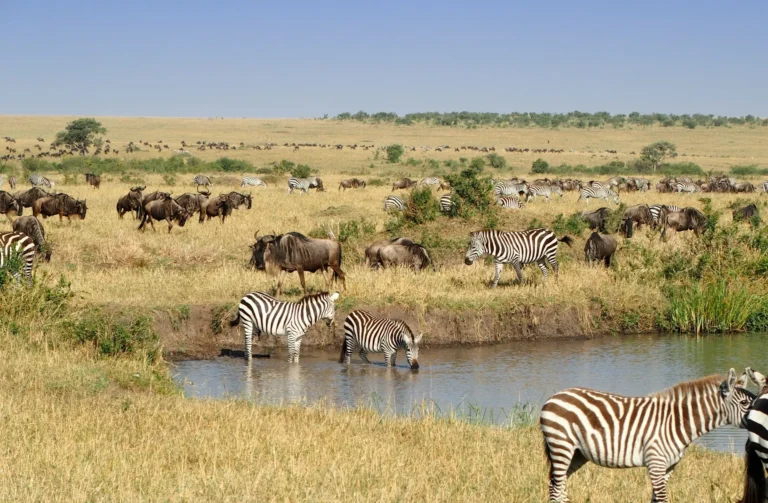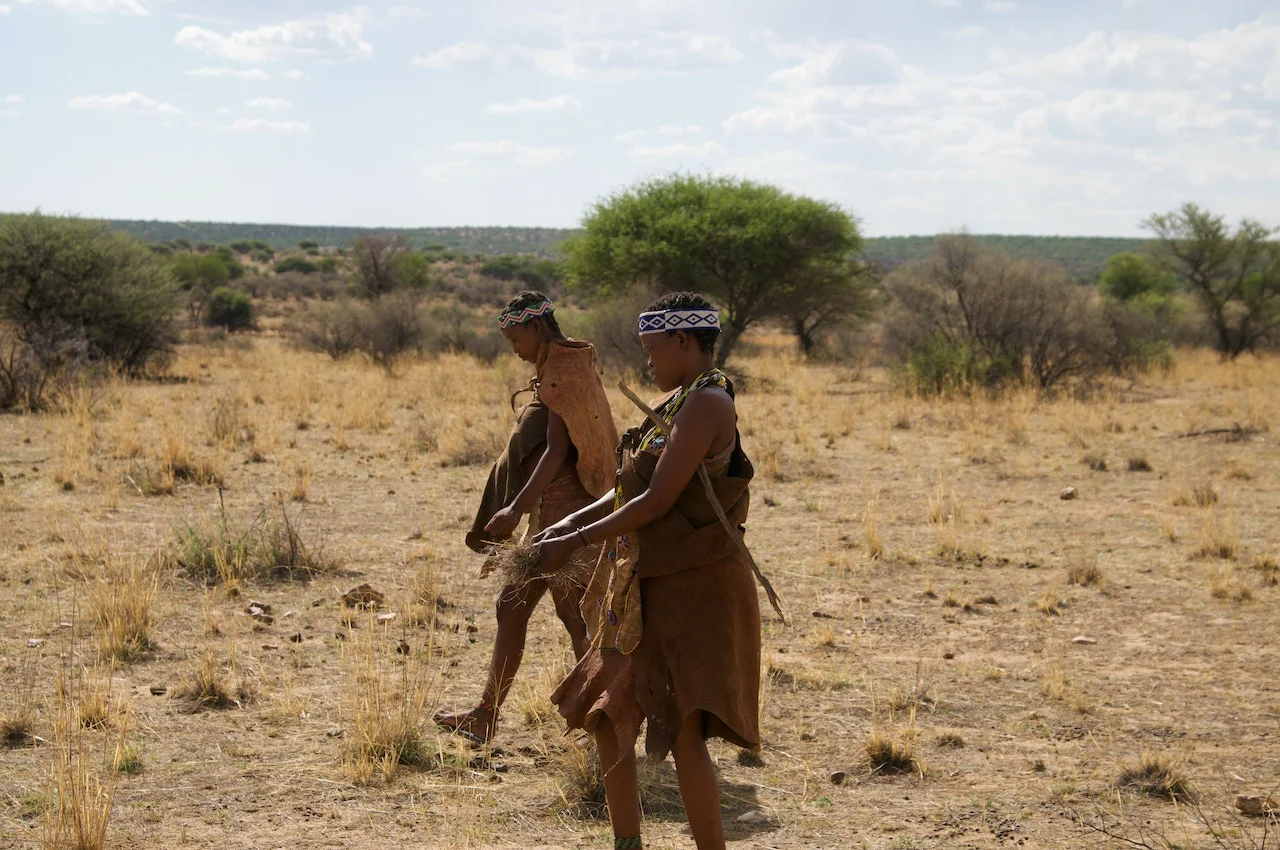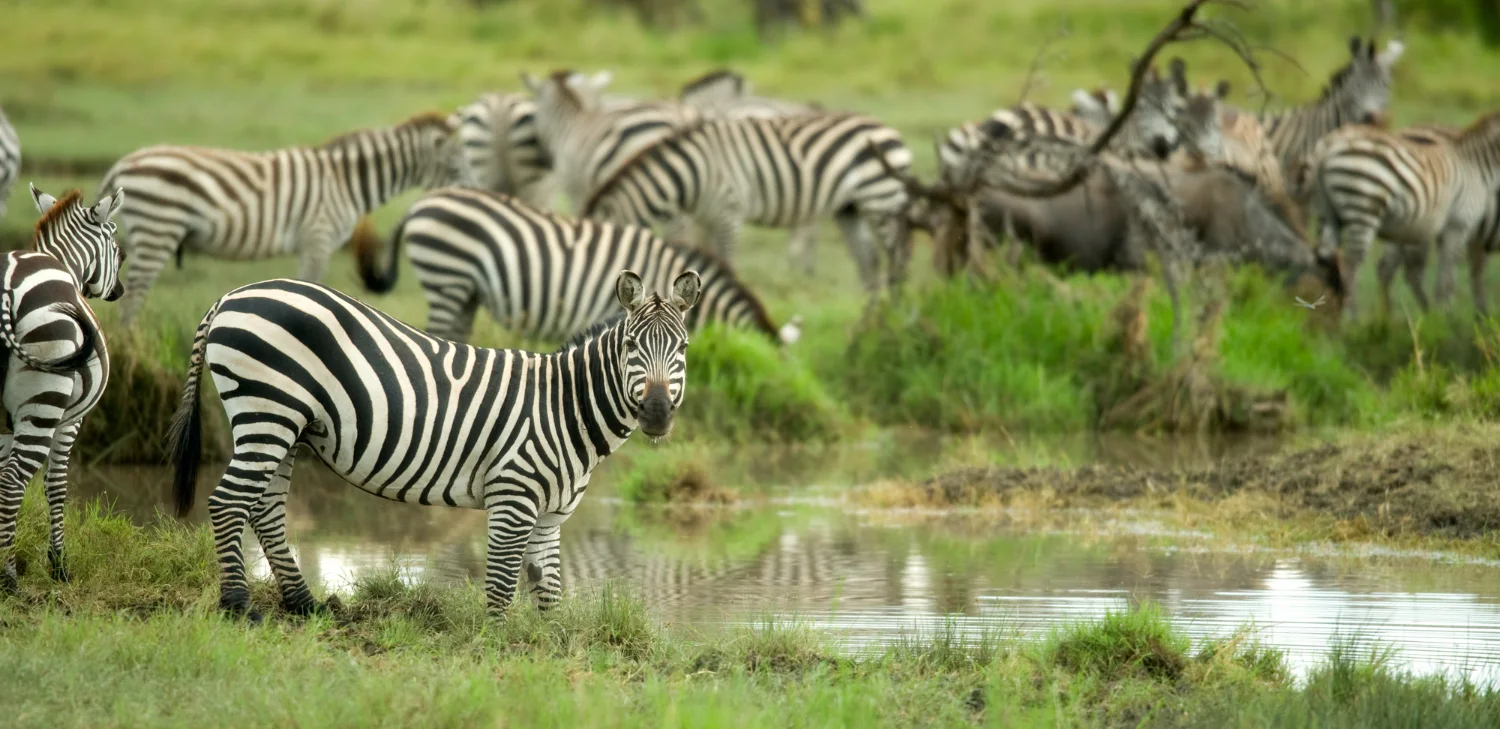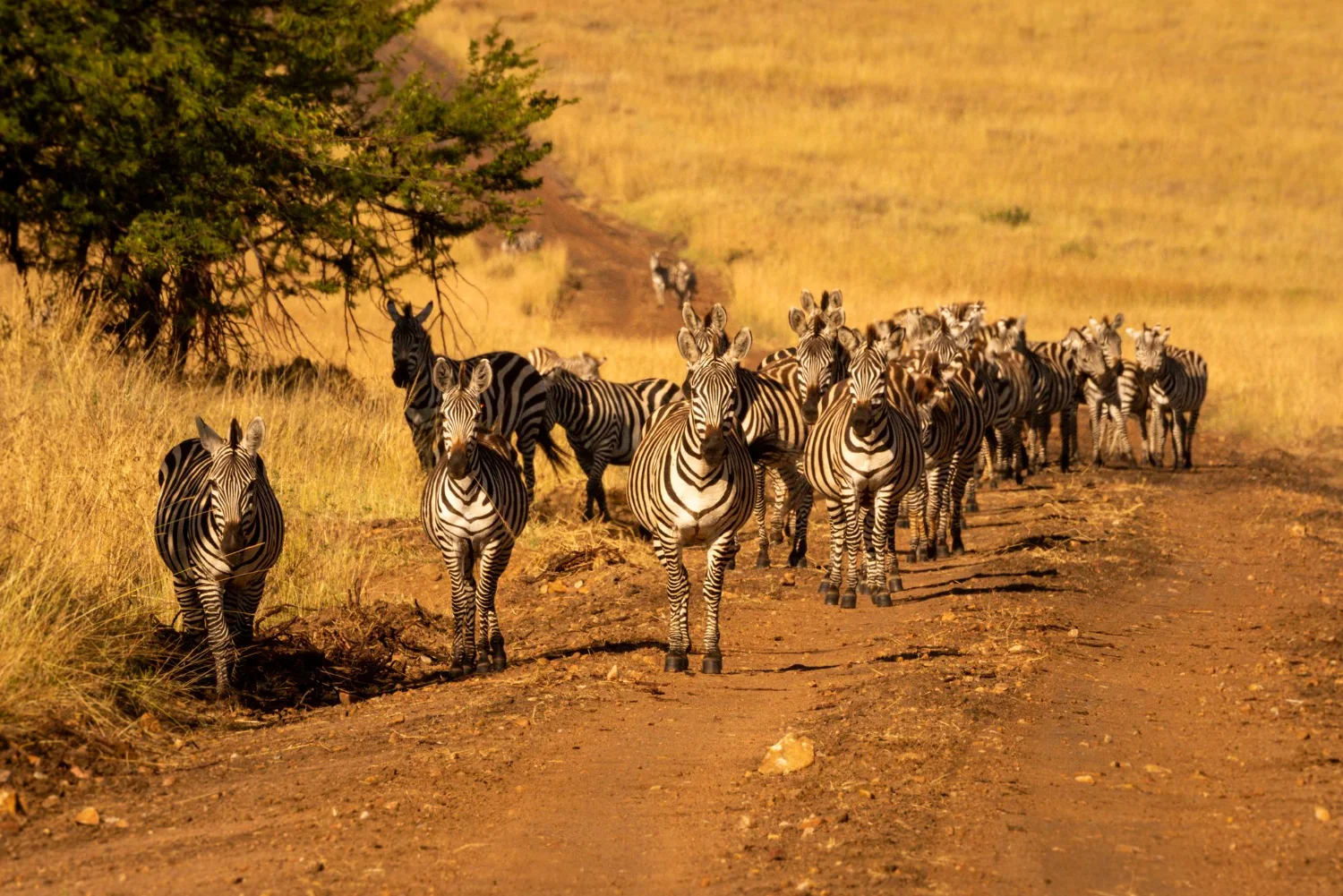Wildlife in Masai Mara
The Masai Mara is renowned for its exceptional population of wildlife. It is one of the best places in Africa to see the “Big Five” which includes lions, leopards, elephants, African buffalo, and black rhinoceros. The reserve is home to a large number of lions. Leopards are also present but stay hidden in the riverine forests. Large herds of elephants roam the plains and the reserve acts as a crucial habitat for the endangered black rhino.
Beyond the Big Five the Mara hosts an incredible diversity of other animals. Cheetahs are frequently spotted on the open plains where they hunt gazelles and wildebeest. Hyenas are abundant and often compete with lions for food. The plains are also home to giraffes, zebras, topi, and elands. The Mara and Talek rivers are home to large groups of hippos and Nile crocodiles. The reserve is a haven for birdlife with over 500 species recorded including almost 60 species of raptors.
The Great Migration
The Masai Mara is famous for being a stage for the Great Migration which is one of the most incredible wildlife spectacles on Earth. From July to October millions of wildebeest accompany hundreds of thousands of zebras and gazelles as they migrate from the Serengeti into the Mara in search of fresh grazing. A highlight of this journey is the dramatic river crossings where the herds must navigate crocodile-infested waters.
Things to Do in Masai Mara
Your safari experience in the Masai Mara is filled with opportunities for adventure and discovery.
- Game Drives: Explore the vast plains and riverine forests on morning and afternoon drives to witness the incredible diversity of wildlife.
- Hot Air Balloon Safaris: Gain a unique perspective of the landscapes and wildlife from a hot air balloon at sunrise.
- Maasai Cultural Visits: Visit a traditional Maasai village to learn about their culture and traditions.
- Walking Safaris: Accompanied by an armed ranger you experience the bush on foot for a thrilling encounter with nature.
- Bush Meals and Sundowners: Enjoy a meal or a drink in the heart of the wilderness as the sun sets over the savannah.
Best Time to Visit Masai Mara
| Month | Climate | Wildlife Viewing |
|---|---|---|
| January – March | Dry season with warm days and cool nights. | Excellent for spotting big cats. The plains are teeming with newborn animals. |
| April – June | “Long rains” bring lush green landscapes. | Good for birdwatching. Fewer tourists visit during this time. |
| July – October | Dry season is the peak travel time. | The Great Wildebeest Migration is in full swing with dramatic river crossings. |
| November – December | “Short rains” bring green landscapes again. | A quieter time to visit with good resident wildlife viewing. |
Guide Tip
To avoid the biggest crowds during the Great Migration consider visiting in late June or early November when the herds are often still in the area but there are fewer tourists.







